|
The Ethiopian Church lent begins tomorrow, sooner and lasts longer than lent in the U.S. It is a lot more focused on sacrifice too. No animal products. Every day. For 55 days. Worse yet, no food or drink until 3 p.m. Every day. That means coffee too. No alcohol at all. Of course, some people don't observe these customs. Others are even stricter. Some butcher shops, dairy stores and cafes close during this period. For a great pictorial explanation of Ethiopian lent go to https://www.dw.com/en/ethiopia-fasting-for-55-days/g-38067533 But today, most everyone is feasting on the literal sacrificial lamb or goat. I was no exception, thanks to the kindness of my Guesthouse family. The dishes were delicious, if difficult for a mostly vegetarian to digest. But it will be easy to find my favorite vegetarian dishes for the next 55 days. Shed to table. As I got ready to go on my bike ride the camera shy goat above had taken up residence in the bicycle parking lot. Since today was the last day before the 55 day Easter fast I thought he might end up on the table for dinner. I did not think he would end up on my table. My Guesthouse treated me to their pre-Easter fast feast on the right. Donkey carts are still a common way to move agricultural products and building materials. They don't have to wait in line for gas (benzene as they call it in Ethiopia). This donkey is bypassing a line for gas that stretches about a mile long. https://www.africanews.com/2019/01/16/ethiopia-djibouti-road-blockade-causes-acute-fuel-shortage-in-addis/ Below you can also see one of the best views of Bahir Dar from just below the last palace built by Haile Selassi.
0 Comments
Timkat exceeded my high expectations. It was so beautiful and colorful. There was music and dancing and religious ceremonies that take place over three days. But most memorable in Ethiopia is the people, and Timkat was no exception. They welcomed us and were proud to have us be a part of their UNESCO World Heritage Event. The event celebrates Epiphany, John's baptism of Jesus and includes the symbol of the Ark of the Covenant. Its replica is in each Ethiopian Church. It is called a Tabot and is carried on a priests head from each church to a central location on day one. On day two all the Talbots are returned to their respective churches in another procession except one. St. Michael's church stays at the central location for an extra day. Above you can see St. Michael's Talbot being returned in what was probably the single biggest procession I have ever seen. We enjoyed it from the balcony and roof top of my hotel. I could not have done that in Gonder. I cannot adequately capture the amazing beauty and celebration of Timkat here. You can learn more about it at https://www.thetravelmagazine.net/timkat-festival-ethiopia.html On day two pilgrims start the day by coming to the central place where the Tabots were kept overnight to get baptized again. In Bahir Dar at one location I understand they used Lake Tana to baptize. But where I was they used firehoses. Some of the priests seemed to enjoy dousing their flock with the holy water. I saw lots of cold, wet pilgrims leaving the park. Some stopped for sugar cane for quick energy. Below, you can see the colorful groups that march with the floats and priests to return the Tabots (Arks of the Covenant) back to their rightful churches. People sweep the streets with palm fronds, symbolic of palm Sunday) ahead of the red carpet, which is laid down ahead of the musicians, dancers, floats and priests carrying the Tabots (Arks of the Covenant) on their heads. Incense burns constantly. This goes on for miles. The carpet carriers below are very earnest. A wardrobe malfunction is fixed on the fly during the parade Sugar cane is brought in on these donkey carts and sold as a snack at the festival. I understand this is a relatively new tradition, but a good one I think. Of course, you can also get a Coca Cola for your sugar fix. Below is a vendor who harkens back to a much older tradition. Male suiters used to propose to a young woman during Timkat by throwing a lime at her. A throwback that isn't taken seriously today.  Below is the first day of Timkat. As noted before, replicas of the Ark of the Covenant (Tabots) held in each Ethiopian church are carried on the top of priests' heads to a central location in the community. That was a park near the lake in my part of Bahir Dar. There is dancing and blessing of water for baptisms. As I left the gathering on the first day of Timkat this guy below charmed me into getting a cross painted on my arm. I waived him off at first and he gave me a perfect "buzz killer" look. The only thing to do was set the price. He asked for too much at first so I started to walk off again. He said okay, he'd do it for free. Just to pain a Ferengi's arm I suppose. He really did a great job and, of course, I paid him what we both decided was a fair price. This street scene captured from my balcony was my initiation into Ethiopia's Timkat. The crowds, the colorful floats and the festive atmosphere were Ethiopia at its finest. They are ceremoniously moving the Tabot from each church to a central location for the blessing of baptismal waters. Many people seemed disappointed I did not go to Gonder, where the Timkat celebration is considered superior. But Bahir Dar is my home. I wanted to experience it here. One benefit of Timkat was I was permitted into an Ethiopian Church, the newest and biggest church in Bahir Dar. Getting inside probably had more to do with Zewdu being with me than the Timkat festivities. People are gathering to witness the return of this church's Tabot (Ark of the Covenant) on day 2 here. Ethiopia's Christmas Eve falls on Epiphany in the Gregorian Calendar. Today was Christmas Day and the end to the 6 week fast of no meat, dairy or eggs. So Christmas dinner traditionally consists of meat, dairy and eggs. Zewdu and his family had me over to enjoy their Christmas feast. They have me over for lunch every week, so they know how I love duro wat (chicken and a hard boiled egg in a spicy red sauce with lots of dairy fat in it). Also beef tibs and of course coffee. Delicious. Then I went to Chez Meron for round two. I might eat tomorrow. Ethiopia has a traditional Christmas Day game ye-gena chewata. We watched some of our aerobics friends play it today. It's like field hockey. It has been played for centuries. We are told only on Christmas Day though. The game is so old no one knows for sure how it originated. One story is the Shepards jumping for joy at the news of Jesus birth. The other story a non-believer was beheaded by the three kings (one from Ethiopia) on their way back from Bethlehem. See https://www.ethiosports.com/2011/01/08/ethiopia-cultural-sports-reviving-ye-gena-chewata/ Our Fila Hotel Family treated us to true Ethiopian hospitality today, gifts and a coffee ceremony. They knew it was Christmas on our Calendar. No one else here seemed to. I have only seen one Christmas decoration, a tree, in one resort here. I had only one conversation with someone here who knew it was Western Christmas, Dadimos who lived in the states several years. Ethiopian Orthodox Christmas is not until January 7. The only sign of it is many Orthodox church members are fasting for 6 weeks (no food until noon and a vegan diet). But our Fila Family knew and put on a coffee ceremony for us to celebrate Christmas. They even presented us with these beautiful traditional shirts. Merouane and I had just moved out a week ago, but we are still welcome as family. Gaja has never even lived there, but as our friend is welcomed as well. Ethiopians are so welcoming. They will share what they have, even if they do not have much. I am very fortunate to have this opportunity to spend with them. Christmas Eve Surprises
This Ethiopia Orthodox Medieval Church, Ura Kidane Mehret Church, is worth a second visit. These churches seem to have similar characteristics. They tell the stories of their religion in colorful murals so that the illiterate part of the population could be taught about the religion. The murals cover all the walls on the inner sanctum. The guide on this, my second trip out to the trip, helped bring the murals and their stories to life. The violence of these stories is not censored. Above this first panel are some of the depictions of the apostles' deaths. Below you can see how illustrations also made it into the ancient texts for Ethiopia's Orthodox Church. The museum that holds these artifacts provides a modern glimpse into the ancient religion.  The walk to Ura Kidane Mehret Church and museum includes a shopping mall of crafts and their creators. I missed getting a picture of this guy on my first trip. A peaceful boat ride and walk through a forest of coffee trees and vendors selling crafts brings you to this 14th Century Church. It is said by some to be the most beautiful in the Lake Tana region, and for good reason. The contrasting colors set against the mud/straw walls feel symbolic of Ethiopia. See https://en.wikipedia.org/wiki/Ura_Kidane_Mehret for more information. Below are photos from the museum next to Ura Kidane Mehret Church. One book dates back to 900 A.D. Our guide asked us if we wanted to go into it. When we said yes he summoned a monk who let us in. It was much more impressive than this afterthought would imply. The catch is that the peaceful walk through the forest winds through a variety of shops selling local goods. There were some nice local crafts, from locally harvested incense to pictures on leather to jewelry fashioned out of old, obsolete coins. Frankincense is readily available in Ethiopia, unlike the U.S. It smells wonderful and is used in Ethiopian religious ceremonies, homes and coffee ceremonies on the street or in a restaurant. See https://fairtradefrankincense.com/tag/ethiopia/ It was easy for me to resist everything by the coffee. Jill could not resist buying a local craft from this girl, who drove a hard bargain to the amusement of even the locals who joined us while we had our coffee. The coffee here was delicious as most Ethiopian coffee is. These people are roasting the beans grown there on the peninsula, brewing the coffee while burning frankincense they harvested. They were not going to charge us for the coffee. They wanted to sell us some frankincense instead. I paid for the coffee. It was a peaceful day in Bahir Dar on Wednesdays. It's a fasting day, and we could see the gathering of the mass believers to pray at church when we began our walk shortly after 6 a.m. This is a common site Fridays and Sundays as well. Fasting means nothing to eat until after 3 p.m. our time, that's 9 o'clock Ethiopian time (Sunrise starts the day at 0. Sunset starts the night at 0. Each occurs at what we call 6 a.m. and 6 p.m.). Even when the fast is broken, no meat or dairy is eaten. There are 55 days of fasting right before the Ethiopian Easter, and I think almost as many before the Ethiopian Christmas. I try to observe vegetarian most days, but I don't fast. There isn't much dairy to be had here anyway, but I assume the restriction applies to eggs, which I count on every day. For more information on religion see http://www.ethiopiantreasures.co.uk/pages/religion.htm. It was not so peaceful in other parts of Ethiopia today. There were 200 arrested and 23 killed in and around Addis Ababa due to ethnic clashes. There is a real tension between tolerance of opposition groups and keeping things peaceful. That's the case anywhere. This continues to shape up as an interesting and important year for Ethiopia. I had a conference call cancelled because the internet may be down in parts of where one participant is. See https://www.aljazeera.com/news/2018/09/ethiopia-thousands-protest-ethnic-violence-killed-23-180917141138078.html
Walking about the neighborhood behind our hotel is a great opportunity to see the real Ethiopia. I especially enjoy seeing the children going to school in the morning. I wanted to take a picture of the school, and one of these kids was standing right in front of the sign. We were warned never to take pictures of people without asking permission. In Ethiopia, when you ask if you can take someone's photo you usually get a very enthusiastic yes or an emphatic no. Kids are usually much more eager to have their photo taken, which explains the results of this picture. We found it! We were wondering how we would ever find the American Corner in Bahir Dar. It's hard for us to get around and find anything, and here it is in our neighborhood. The American Corner is a resource center, often set up in partnership with a library as it is in Bahir Dar. English language books and audio-visual materials, college information and other items are available in most corners. Fortunately, near the school pictured above. For more information on Bahir Dar's Corner, go to https://et.usembassy.gov/education-culture/american-spaces/bahir-dar-american-corner/ Street Food Food is a favorite past time of mine. Street food is delicious and fun. If its hot and fresh, its probably fine. I have seen roadside “donut” stands like this in several countries. The patrons gave them ringing endorsements. I usually resist because I know a deep fried anything is inherently unhealthy (although that has not kept me from eating the deep fried fish and chips here). We’ll see how long I can resist these temptations. The Community There are more mosques in this community and in Ethiopia than I expected. Especially since the official statistics put Muslims at less than 10 percent of the population. Some claim it is more like half the population. We saw several mosques on our walk. This one really stood out for the height of its minaret and red color. There are also many Ethiopian Orthodox churches. I will post some photos of them later. Thirty-seven islands are scattered around the 3,000 square kilometer Lake Tana. One of the closest to Bahir Dar is Ras Abay, about a 5 kilometer/3 mile boat ride. We were told only monks or priests can live on the island, which is near the headwaters of the Blue Nile, which we also visited this day.
The island is home to the Debre Maryam. Locals claimed the monastery is 900 years old. Reliable sources say it is not possible to substantiate even a 13th century origin. The roof and solar panel are obvious modernizations. It is apparently one of the few islands and monasteries that women are allowed to visit. Church bells. Monasteries like the Debre Maryam have interesting artifacts surrounding them. The Ethiopian Orthodox Tewahedo Church uses stone chimes, also called lithophones, as single bells (dowel) as well as in sets of chimes. Our student guide rang this lithophone for us to demonstrate its purposes. On one end the chime is a call to prayer. On another end a warning sound. https://www.britannica.com/art/stone-chimes  This is the typical construction of the buildings in the area, especially on the island we visited. This is the entrance of the museum you see pictured below, though we were not allowed to go into it, just like the monastery pictured earlier. You can see how thick the walls are in this photo. This is common, though the weather this time of year is very moderate.  The islands museum housed a variety of artifacts. The books are ancient bibles, written in the Ge'ez language. This is the language of the Ethiopian Church, but not the people. The common language of the people is Amharic. Students take English in grade school, and are only able to continue in high school if they pass a test and are proficient enough in English to study their subjects in English full time. So Ge'ez is a little like Latin was in the Catholic Church before Vatican II reformed the mass to celebrate it in the native language of the congregation. |
Archives
March 2023
|





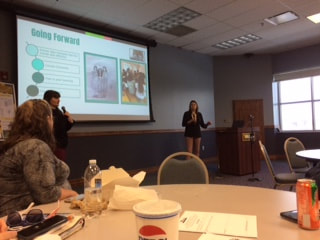
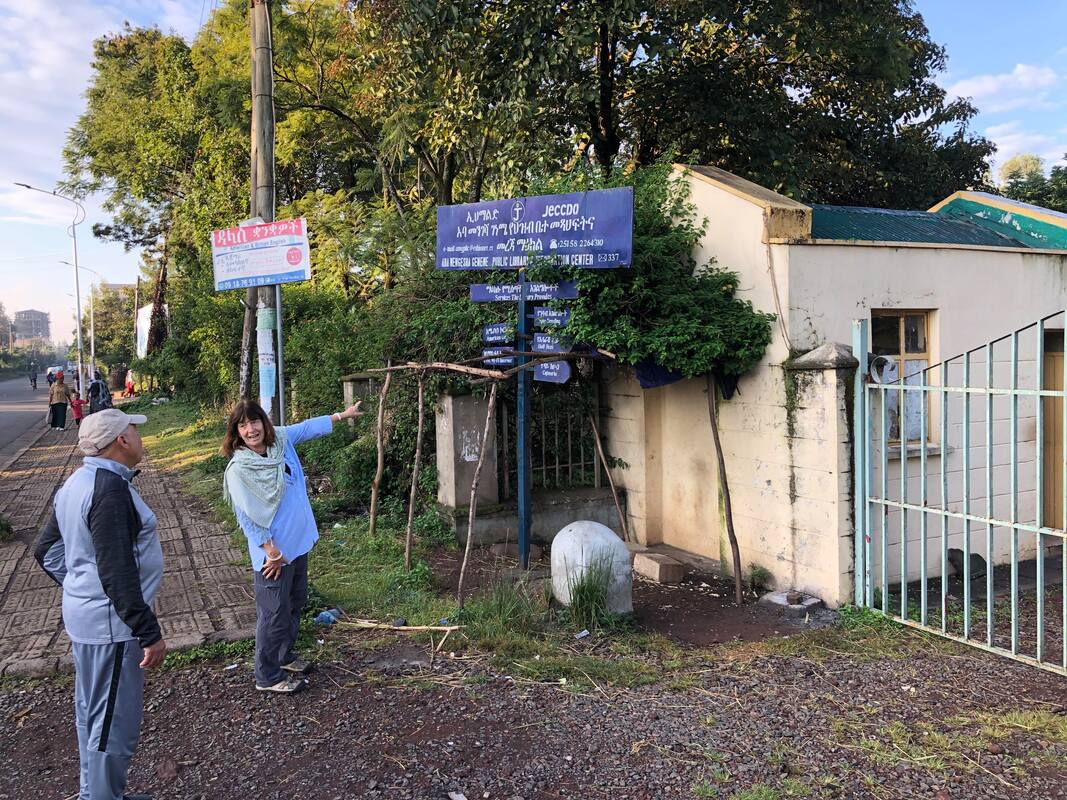


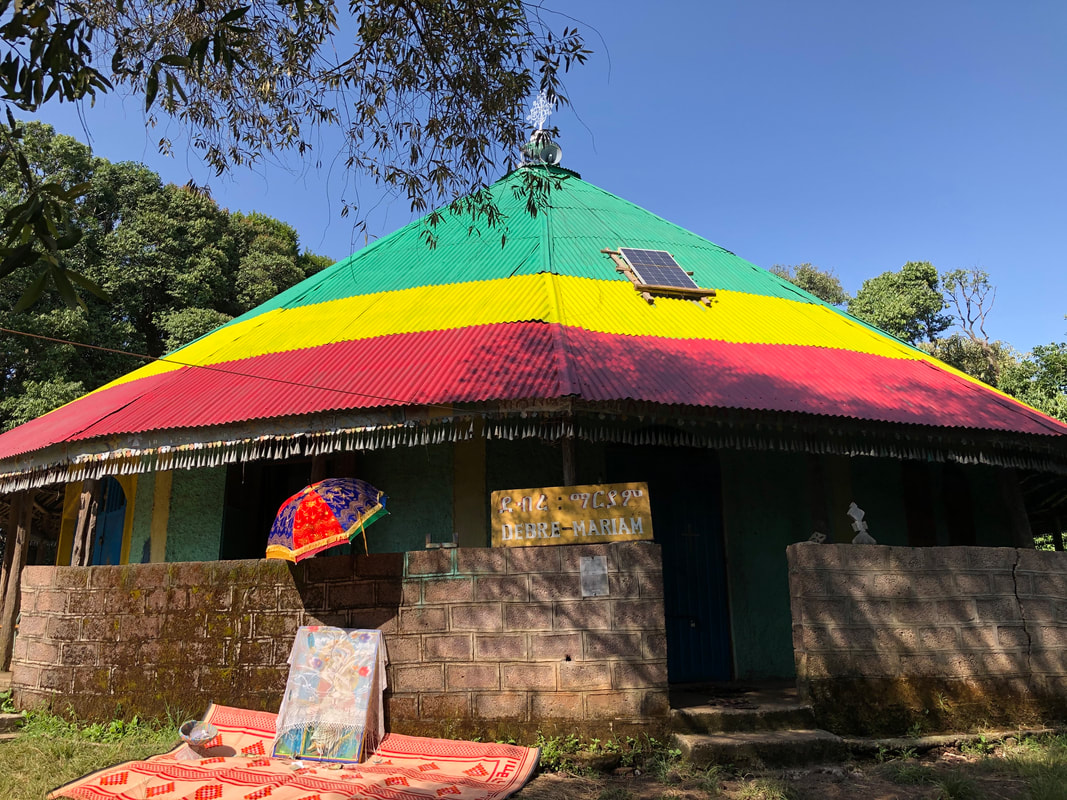

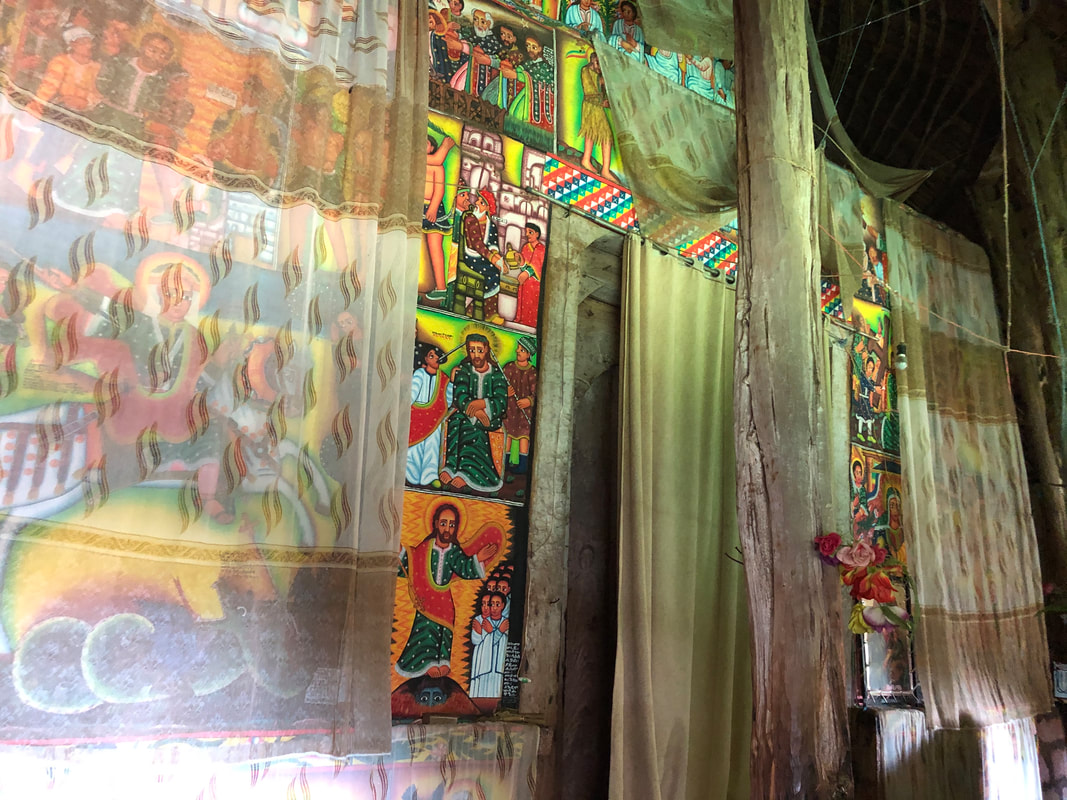
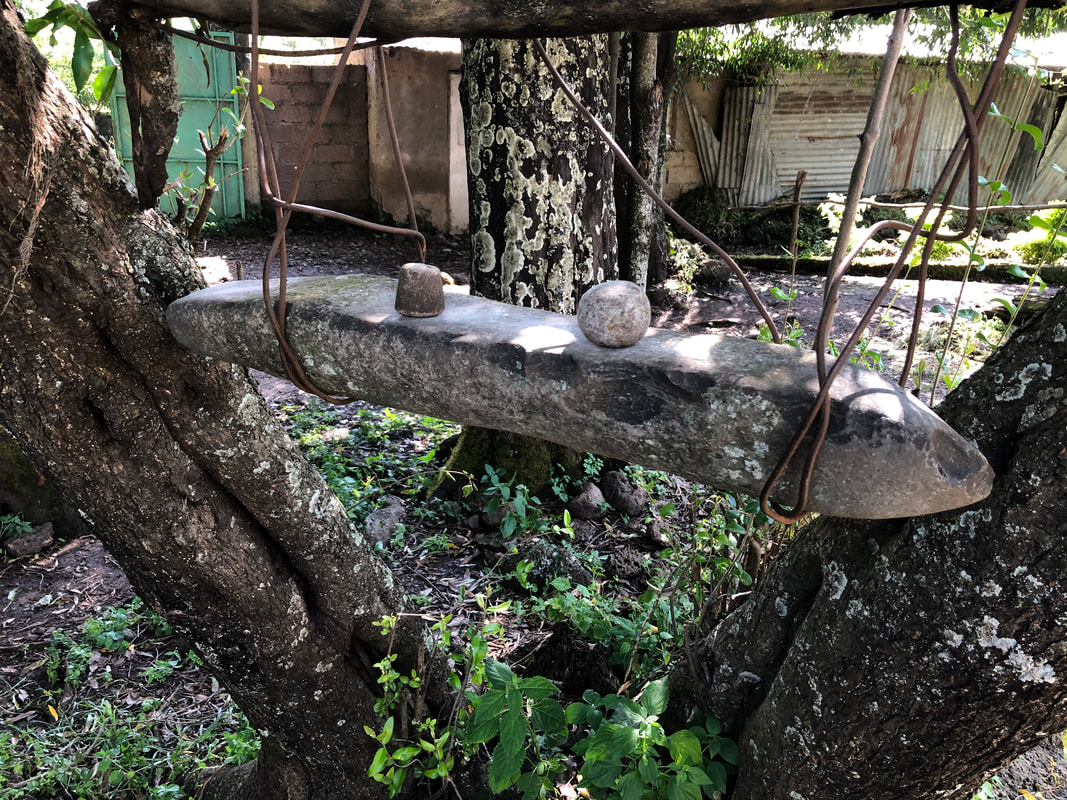
 RSS Feed
RSS Feed